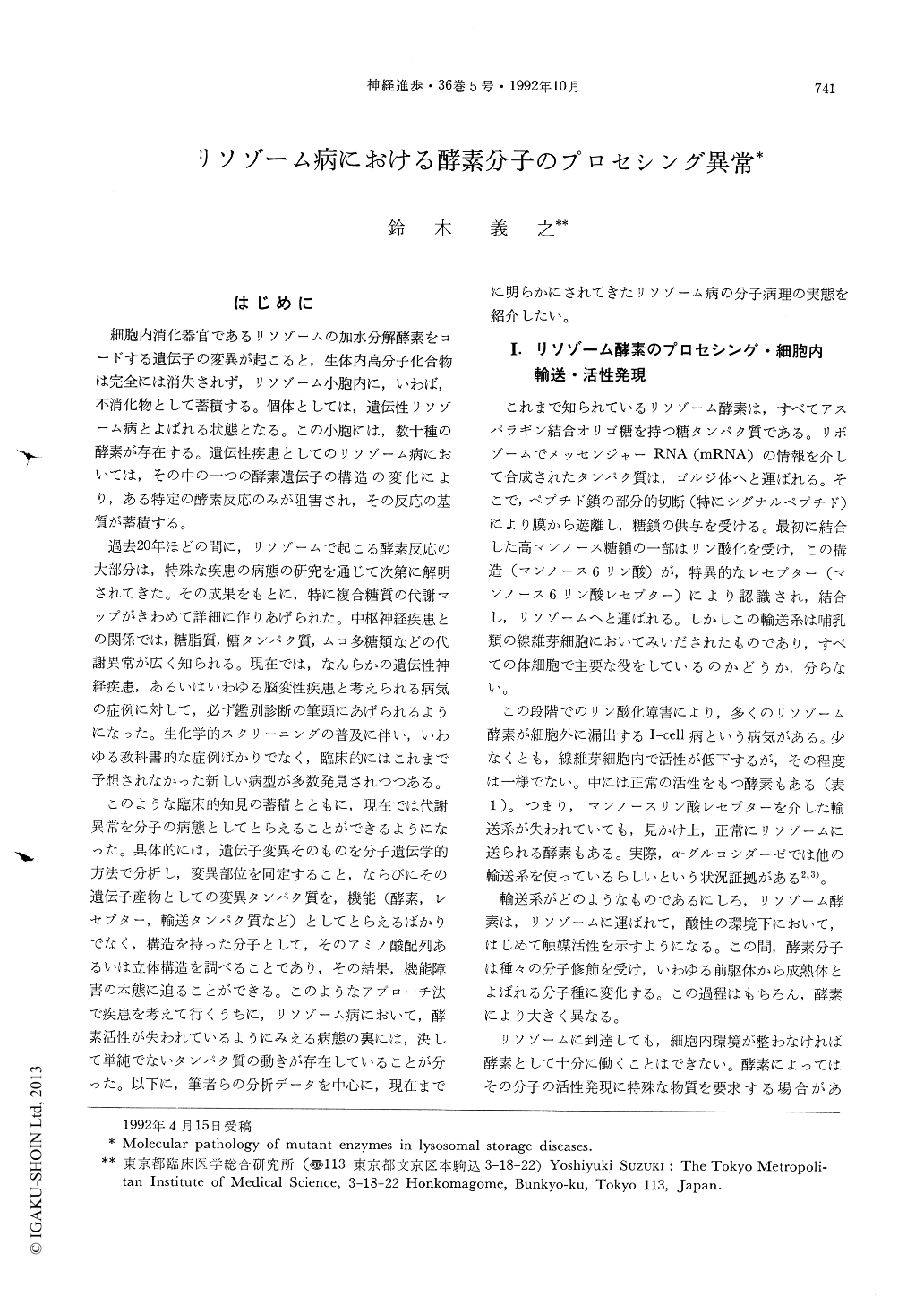Japanese
English
- 有料閲覧
- Abstract 文献概要
- 1ページ目 Look Inside
はじめに
細胞内消化器官であるリソゾームの加水分解酵素をコードする遺伝子の変異が起こると,生体内高分子化合物は完全には消失されず,リソゾーム小胞内に,いわば,不消化物として蓄積する。個体としては,遺伝性リソゾーム病とよばれる状態となる。この小胞には,数十種の酵素が存在する。遺伝性疾患としてのリソゾーム病においては,その中の一つの酵素遺伝子の構造の変化により,ある特定の酵素反応のみが阻害され,その反応の基質が蓄積する。
過去20年ほどの間に,リソゾームで起こる酵素反応の大部分は,特殊な疾患の病態の研究を通じて次第に解明されてきた。その成果をもとに,特に複合糖質の代謝マップがきわめて詳細に作りあげられた。中枢神経疾患との関係では,糖脂質,糖タンパク質,ムコ多糖類などの代謝異常が広く知られる。現在では,なんらかの遺伝性神経疾患,あるいはいわゆる脳変性疾患と考えられる病気の症例に対して,必ず鑑別診断の筆頭にあげられるようになった。生化学的スクリーニングの普及に伴い,いわゆる教科書的な症例ばかりでなく,臨床的にはこれまで予想されなかった新しい病型が多数発見されつつある。
Expression of lysosomal enzyme activities is regulated by various intracellular factors; structure of the gene coding for the enzyme, posttranslational modification (peptide/carbohydrate), intracellular transport/secretion, environmental factors in the lysosome (saposins, protective protein, etc), and proteolytic digestion. In this article, various aspects of molecular pathology in hereditary β-galacto-sidase deficiency were discussed. The enzyme β-galactosidase requires another multifunctional protein (protective protein) for its stabilization and expression in somatic cells. A primary defect in the enzyme activity is therefore caused by mutations of either β-galactosidase gene or protective protein gene. In addition, this enzyme activity is lost in some other metabolic diseases, such as I-cell disease with post-translational glycosylation/phosphorylation defect, and mucopolysaccharidoses with inhibition by storage material.

Copyright © 1992, Igaku-Shoin Ltd. All rights reserved.


